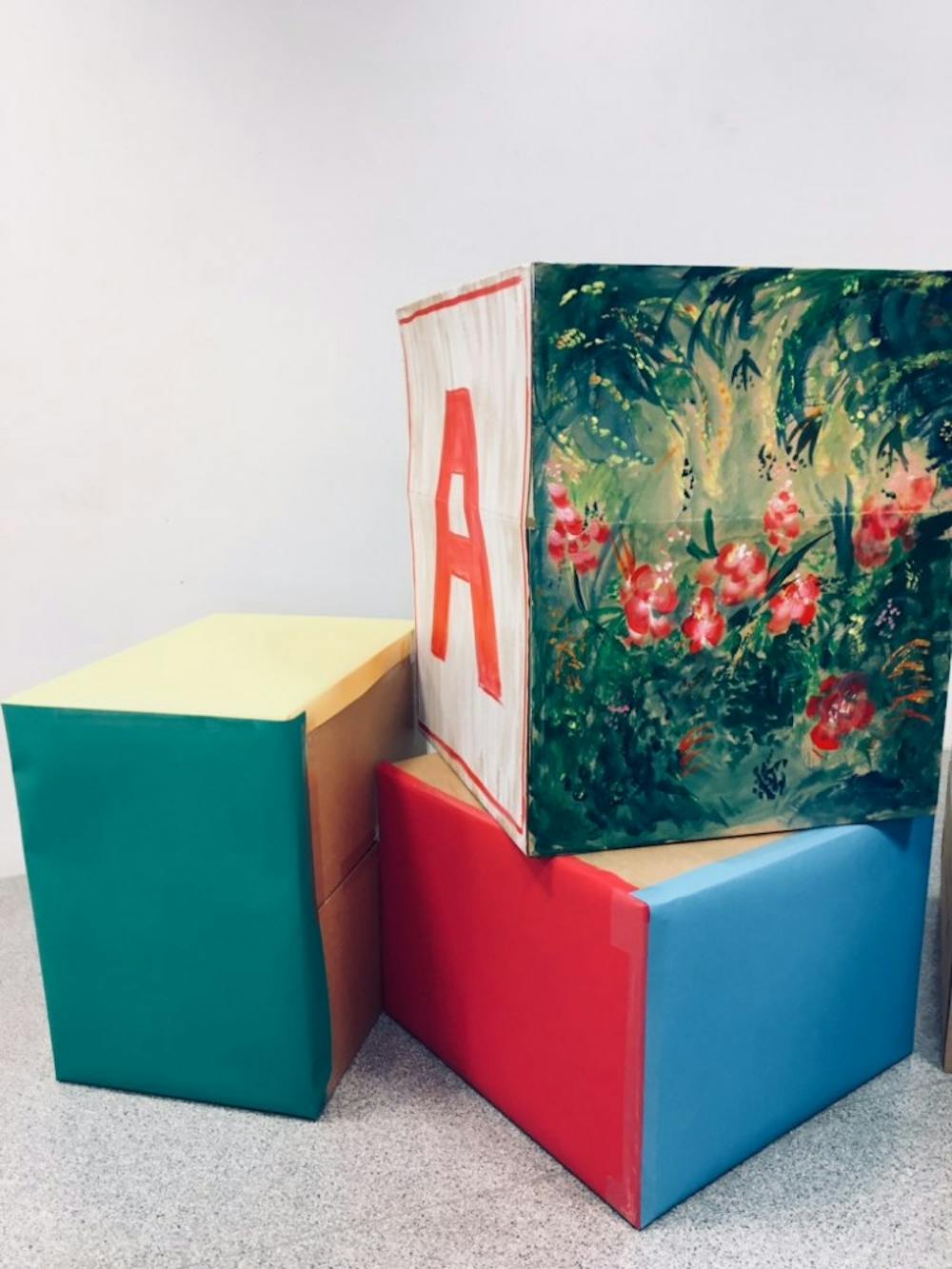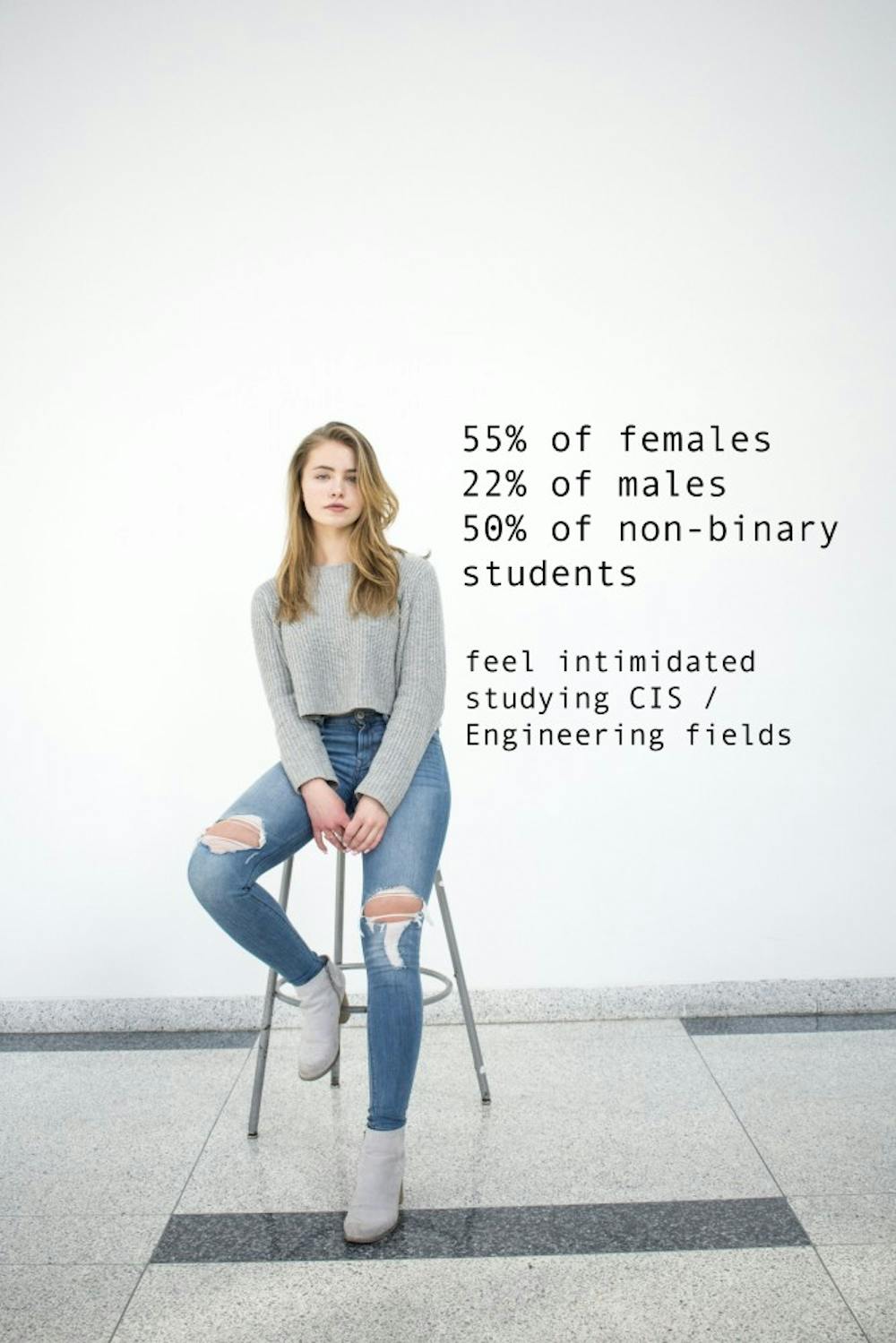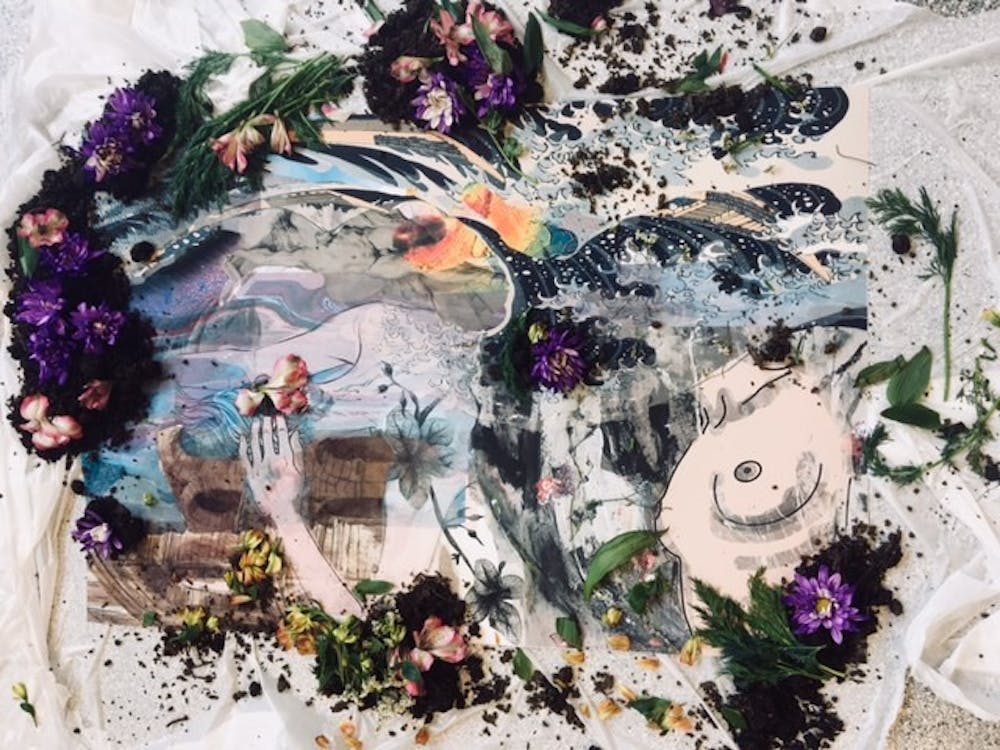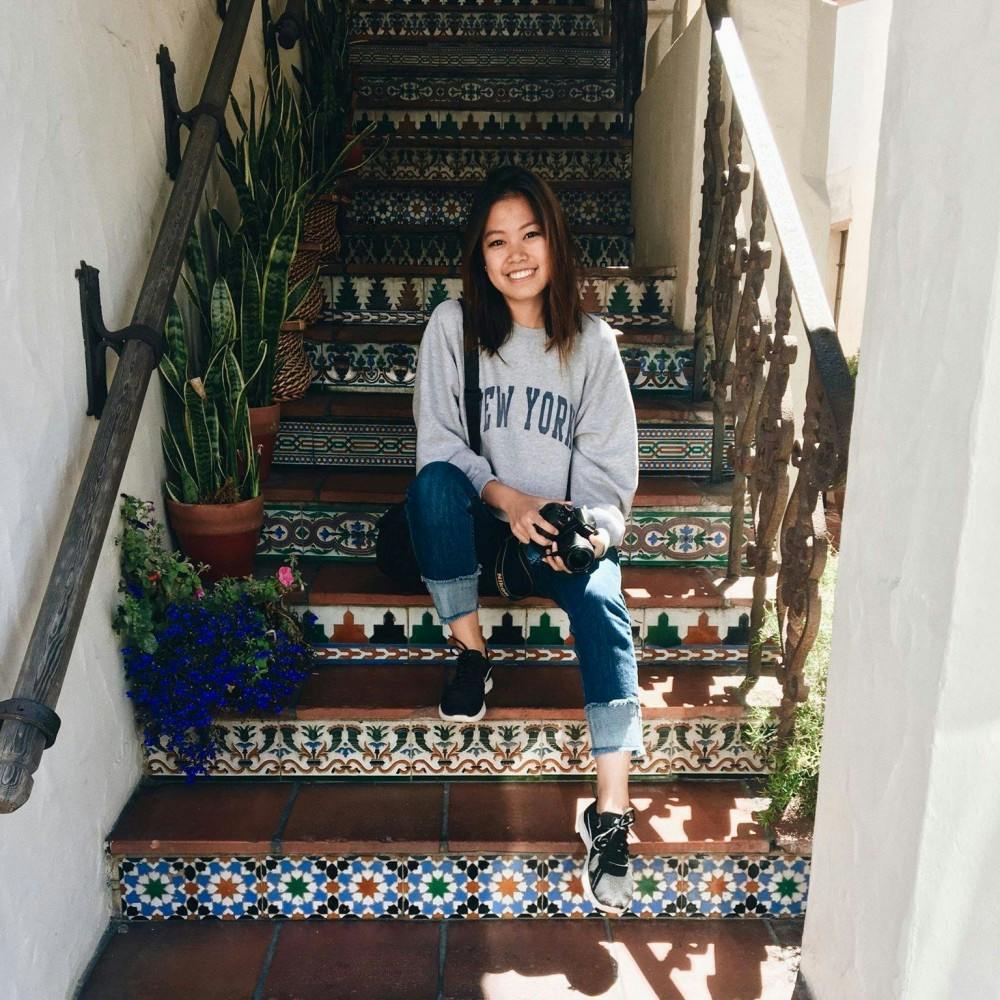Hailing from Ann Arbor, Michigan, Alice Deng (E ’20) is a bit of a street wanderer. Camera strapped around her neck, she radiates a sunny, carefree aura—one can’t help but find her immediately relatable. “I’m a little awkward,” Alice laughs. Beneath this humble charisma, however, is a wildly versatile, creative individual with a deep sense of self. Since coming to Penn with an indefinite idea of what she wanted to do, Alice has found her unique home in the balance between art, design, and computer science. On campus, the CIS major and fine arts minor can be found snapping aesthetic food pics for Penn Appétit, cranking out code as a member of Penn Women in Computer Science (WiCS), and expressing her identity through a diverse set of creative projects.
Alice’s artistic flair exhibits the flexibility that characterizes her entire being. She channels much of her creative energy into photography, which she finds to be the “most social and connective medium.” Yet in truth, her heart lies elsewhere—in the eclectic world of mixed media. “Exploring different ways to incorporate painting, photography, or installation into a holistic piece,” she says, is her absolute favorite thing to do.

Just this past February, Alice’s first installation, Building Blocks, went up in the Charles Addams Fine Arts Building. The mixed–media piece, which was inspired by an open–ended assignment about memory, consisted of several cardboard moving boxes—effectively life–sized versions of children’s ABC wood blocks. On each surface was a series of paintings featuring elements of the influence on girls growing up in the United States. One block represented time as a series of presidential figures with portraits of Bill Clinton, George W. Bush, Barack Obama, and Donald Trump. Other blocks displayed themes of sexuality, social media, innocence, and art, all mixed in with simple children’s block faces of letters and numbers.
For Alice, Building Blocks was an exciting chance to combine installation and painting. “It allowed me to explore ‘memory’ in an almost autobiographical way,” she recalls. On a personal front, the duality of wooden blocks and moving boxes reflected Alice’s fleeting experiences of having moved frequently as a child—from Manhattan to New Jersey, here and there in Ohio, and finally to Ann Arbor, Michigan.

Another such piece was “The % Project,” a larger scale social media movement art project many have seen scrolling through Facebook. Sponsored by WiCS, it shared statistics about gender and diversity in computer science, specifically the lack of adequate representation and equal treatment as it relates to the gender binary. Over three photoshoots, Alice captured portraits of WiCS girls from all different years and overlaid stats from a diversity census on top of them. The finished portraits became many of the girls’ profile pictures, sparking a conversation about issues of diversity on campus. It was the first time Alice’s interest in photography truly intersected with her involvement in the engineering community. At first, she herself was surprised by the numbers in the project. “At Penn, people don’t really treat me differently as a woman in comp–sci, which is really special,” she says. However, she’s much more aware of it when people bring up the numbers. “People shouldn’t feel noticed because of their gender,” she insists. “That’s why being aware of these statistics while fostering a collaborative environment is super important.”
Growing up, Alice loved art but never had the chance to explore it formally. As a cellist from age seven, she knew early on that she deeply needed to have a creative outlet. Once she touched down at Penn, the chance to take Fine Arts courses finally sprung up, and “meeting other people with cool ideas and creative passions” inspired her to jump right in. Her first formal experience with photography in the course, "Digital Photography," solidified her interest in the fine arts. Since then, she has continued to take courses such as "Dispersive Lens," a freeform studio course that allowed for choice in medium and loose theme interpretation; "Art, Design, and Digital Culture," through which she gained exposure to Photoshop and Illustrator; and "Film Photography," which involved a darkroom aspect of manually developing film that showed her the importance of process and physical labor in art.

One class in particular, "Art of the Web," really got Alice thinking about the distinction between art and design. “As an artist, you make art based on the way you feel, and the viewer interprets it how they will. But for design, instead of doing it from your point of view, you put yourself in the shoes of the user,” she explains. “Art is more internal, and design is more empathy and research–based.”
In the future, although she is unsure about possible career paths, Alice sees both art and design playing a consistent role in her life. “I definitely want there to be a creative and visual process in my products,” she says. She navigates art and computer science as two binary modes of thought, each acting as a refreshing departure from the other. Computer science is the older sibling that encourages her to be diligent and set quantifiable goals, while fine arts is the wacky best friend that gives her freedom to express her personality and viewpoints.
How to marry the two? She admits she’s still thinking about that, but not to worry—time is on her side. For now, it’s a balancing act, a tightrope of sorts, and Alice walks it like a pro.

